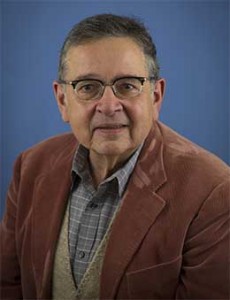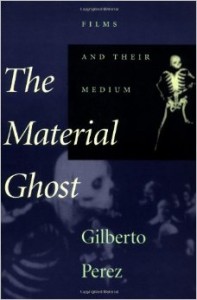I can’t remember the first time I met Gil Perez, but the first time I got in touch with him, which must have been in the late 60s, it was to reprint a remarkable essay of his about Murnau that had appeared in Sight and Sound for an anthology I was editing called Film Masters, a book that for various complex reasons never came out (although, if memory serves, it twice reached the galley-proof stage). I do recall that Gil was still a theoretical physicist at the time, in the U.S. but still relatively fresh from Havana, and he was most likely making his academic transition to film studies and film theory when we eventually met in New York. (See his Introduction to his magisterial 1998 The Material Ghost, “Film and Physics,” for more details.) Years later, circa the early 80s, we became neighbors in Hoboken, living only a few blocks apart, and we remained loosely in touch for the remainder of his life, during his various stints at William Paterson, Princeton, Harvard, Missouri, and, most permanently, Sarah Lawrence, where he ran the film history program.
A slow and methodical writer, but also a prolific one, Gil wrote frequently about film for the The Hudson Review, The Yale Review, and the London Review of Books and less often for film and academic journals, and I was often envious of the way he was both welcome and able to hold his own as a public intellectual with a literary sensibility in those and similar venues, such as The Nation. (As I recall, he also wrote at least once or twice about contemporary fiction.) A very sturdy collection could be made up of those pieces, and he was also working on an ambitious second book about film rhetoric that had been in progress for several years. The last time we met was on October 5, when he came to a screening of The Sandwich Man (1983) at the Museum of the Moving Image’s Hou Hsiao-hsien retrospective in Queens that I was introducing, and we went afterwards in his car to have a long and enjoyable dinner with a couple of other friends before he drove me back to where I was staying.
He seemed in perfectly good health at the time, so it was a complete shock to learn of his death from an unexpected heart attack a few hours ago, when I was returning from a Chicago press screening of Godard’s Adieu au langage 3D. Only last evening, I returned from a short visit to Manhattan, where I surely would have called Gil, or tried to, if I’d been around much longer. On Saturday, I’d attended the annual meeting of the National Society of Film Critics, where I’d been delighted as well as surprised that Godard’s film had been voted the top award — and I’m sure that Gil, one of Godard’s most eloquent defenders, would have been pleased as well.
By a strange twist of fate, the emails informing me of Gil’s death arrived at the same time as a copy of Godard’s personal thank-you to the National Society, which is reproduced below. Remembering Gil’s passionate defense of Nouvelle Vague in The Nation, I’d like to think that Godard’s gratitude would go to him as well. He certainly earned the gratitude of Jean-Marie Straub and Danièle Huillet for his “Modernist Cinema: The History Lessons of Straub and Huillet” in the October 1978 Artforum, and when I put together a collection of articles about their films for their only American retrospective to date, in 1982, with Straub and Huillet’s guidance and suggestions, that article was the publication’s centerpiece.
It’s still far too soon to assess the immense value of Gilberto Perez’s writing, but there’s no question that more of it deserves to become available. [1/7/15]
Postscript: I’ve just accessed a Gil Perez bibliography: not up to date, but extremely useful. [1/7/15]


